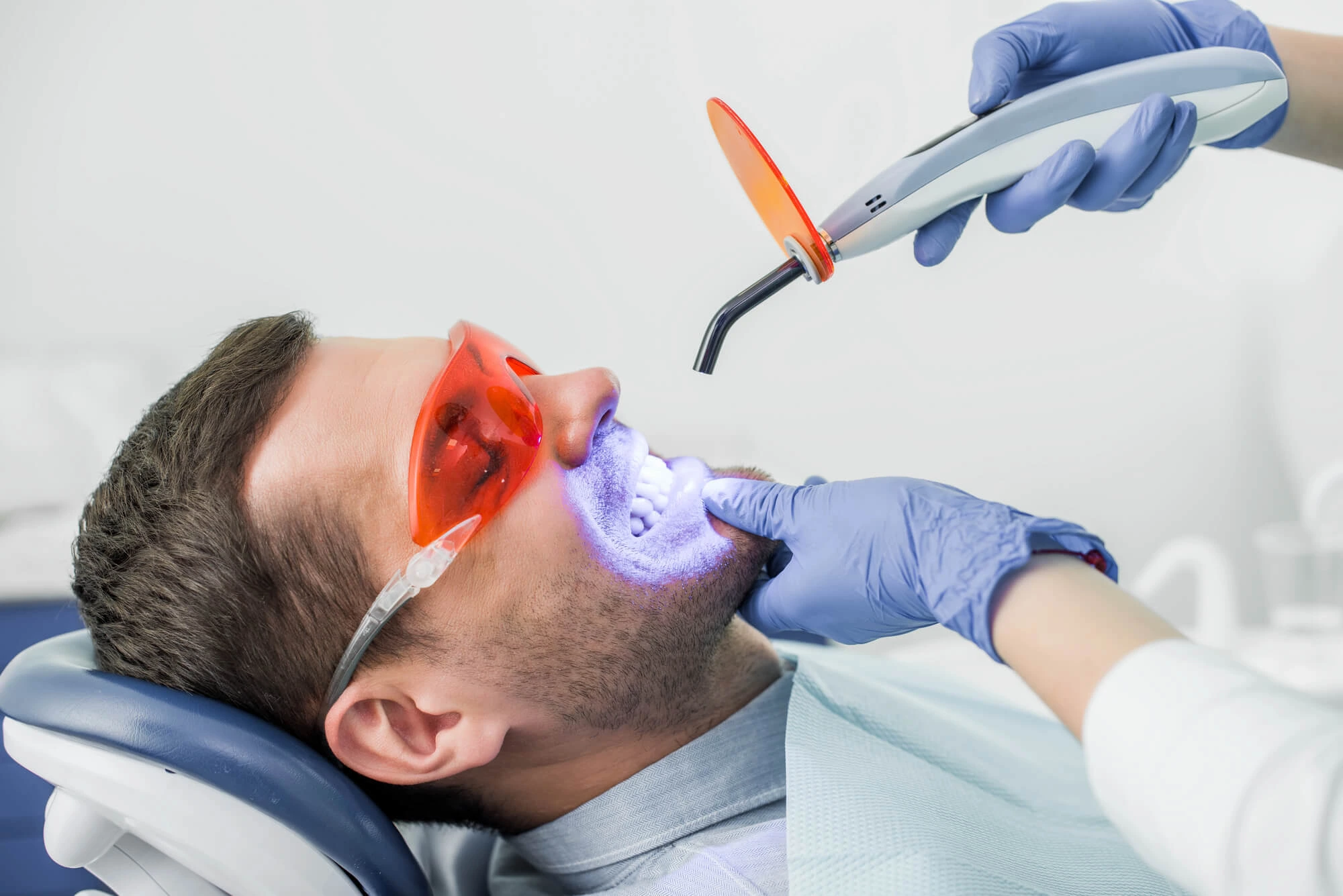A bright, white smile is often associated with good health and confidence. Still, many people struggle with dental stains that dull their teeth and require teeth whitening in Knoxville, IL. While some staining is natural over time, many causes are preventable before they emerge.
By understanding how lifestyle choices or natural changes impact your smile’s color, you can prevent staining, avoid teeth whitening, and maintain a healthier, more attractive smile.

Top Five Causes for Dental Stains
1. Food and Beverages
Some foods and drinks are well-known for staining teeth. You may have already heard about coffee, tea, red wine, cola, and dark-colored berries causing discoloration, but why does this happen?
These foods and beverages contain chromogens, pigmented compounds that cling to the dental enamel. Additionally, acidic drinks like soda and citrus juices can wear down enamel, making it easier for stains to penetrate. Even soy sauce, curry, and tomato sauce can contribute to staining if consumed regularly.
Pro tip: Rinsing your mouth with water after consuming these items, using a straw, or brushing after meals (when appropriate) can reduce their staining effects.
2. Tobacco Use
Smoking or chewing tobacco is a leading cause of dental stains. The nicotine and tar in tobacco products are absorbed into the pores of the enamel, causing yellow or brown discoloration. Over time, these stains become deeply embedded and difficult to remove with regular brushing.
Beyond cosmetic concerns, tobacco use is also a major risk factor for gum disease and oral cancer, so quitting not only improves appearance but also overall oral health.
3. Poor Oral Hygiene
Neglecting daily brushing and flossing allows plaque, a sticky substance made of bacteria, to build up on the teeth. If not removed, plaque can harden into tartar, which is porous and can absorb stains more easily. In the long term, this leads to a dull, yellowish appearance. Poor oral hygiene can also contribute to cavities and gum disease, compounding the damage.
4. Aging
As we age, the outer layer of our tooth enamel wears away, revealing the natural yellowish dentin underneath. This process is completely natural and affects everyone to some degree. Older individuals also tend to accumulate more surface stains over time, contributing to a darker smile overall.
While aging is unavoidable, maintaining good oral hygiene, avoiding stain-causing foods, and getting regular dental whitening treatments can slow discoloration.
5. Medications and Medical Treatments
Certain medications can cause tooth discoloration, especially during tooth development (in children). Antibiotics like tetracycline and doxycycline are well-known for this effect.
In adults, some antihistamines, antipsychotics, and blood pressure medications may also lead to staining. Additionally, treatments like chemotherapy or radiation to the head and neck can discolor teeth.

Combine Regular Teeth Whitening in Knoxville, IL, with a Personalized Care Routine
Dental enamel is a porous material. What you eat, drink, and any medications you take all have the potential to penetrate its layers and affect its color over time. While well-timed whitening treatments are effective at removing these stains, preventing them from happening can result in a brighter and healthier smile.
If you'd like to learn more about caring for your whitening results, contact Smalltown Dental. We want to help you boost your white smile with pride!








.webp)








